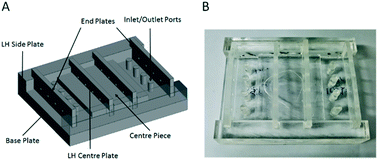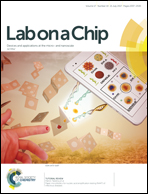Hybrid polymer microfluidic platform to mimic varying vascular compliance and topology†
Abstract
Several cardiovascular pathologies and aging have been associated with alterations in the mechanical and structural properties of the vascular wall, leading to a reduction in arterial compliance and the development of constriction. In the past, rare efforts have been directed to understand the endothelial cell response to combined mechanical stimuli from fluid flow and substrate rigidity. Recent approaches using microfluidic platforms have limitations in precisely mimicking healthy and diseased vasculature conditions from altered topological and substrate compliance perspectives. To address this, we demonstrated an effective fabrication process to realize a hybrid polymer platform to test these mechanistic features of blood vessels. The salient features of the platform include circular microchannels of varying diameters, variation in substrate rigidity along the channel length, and the coexistence of microchannels with different cross sections on a single platform. The platform demonstrates the combined effects of flow-induced shear forces and substrate rigidity on the endothelial cell layer inside the circular microchannels. The experimental results indicate a pronounced cell response to flow induced shear stress via its interplay with the underlying substrate mechanics.



 Please wait while we load your content...
Please wait while we load your content...